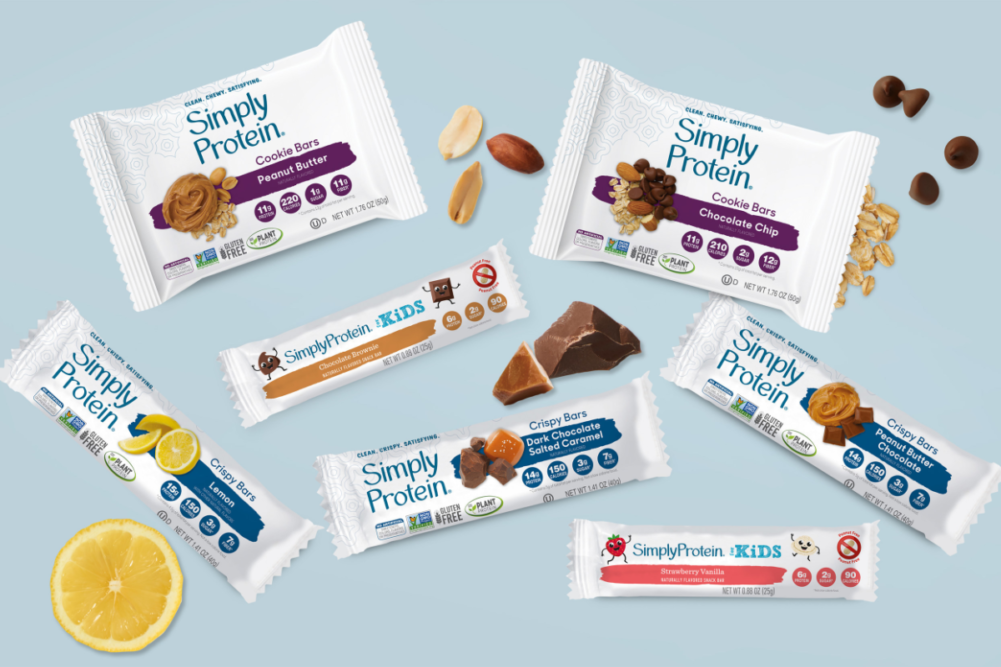TORONTO — SimplyProtein is looking to grow from an $18 million brand to a $100 million brand in the next five years.
The nutritional snacking brand, which was acquired from Simply Good Foods by Wellness Natural Inc. last fall, saw its US sales grow 42% in 2020, even as the overall nutritional bar category declined. Michael Lines, president and chief executive officer of Wellness Natural, is looking to leverage the brand’s positioning to build on that momentum.
“Our low-sugar, high plant-based protein, low-calorie combination continues to resonate with consumers through COVID,” he said.
Prior to launching Wellness Natural, Mr. Lines was vice president and general manager of SimplyProtein and Atkins at Simply Good Foods. The brand has steadily expanded since entering the United States three years ago and already is benefiting from being a standalone company, he said.
“I worked with the business for three years before I put investors together to acquire it,” Mr. Lines said. “Simply Good Foods is a billion-dollar company with Quest and Atkins, and SimplyProtein was a smaller brand. The benefit is focus, nimbleness and our ability to refresh and reinvent the brand in a way that makes sense to the consumer.”
SimplyProtein will kick off its refresh this spring by introducing its kids bar in the United States. Already available in Canada, the kids format features 6 grams of protein and 2 grams of sugar per serving.
“Moms are looking for low sugar snacks for their kids,” Mr. Lines said. “They’re also looking for peanut-free and tree-nut free school snacks.”
The children’s segment is one of the only growth areas in the bar category, he added.
“One of our largest competitor’s core business is declining, but their kids business is up 11%,” Mr. Lines said. “When you look at our kids product, what sets it apart is that we only have 2 grams of sugar. The nearest competitor has 5, and there are some competitors with upwards of 70 grams of sugar.”
Texture and protein content also help the kids bar stand out.
“Our regular bars have between 11 and 15 grams of protein while the kids bars have six,” Mr. Lines said. “That’s important because it gives it a lighter, crispier texture versus a denser product.”
SimplyProtein is refreshing its existing lineup of crispy bars, baked bars and crunchy bites with new flavors. New formats and occasions beyond snacking also are on the horizon.
“Three-quarters of the opportunities are still in what you call a snacking occasion, but we’re looking at packaging and formats that are outside of just your traditional bar,” Mr. Lines said. “A lot of our research in the US shows consumers are looking for more energy and focused functional benefits from their snacks. What we’re looking to develop is an energy cluster or an energy bite, for example. We would do that in more of a stand-up pouch format.”
Outside of snacking, Mr. Lines thinks the next adjacency for SimplyProtein is breakfast.
“That could be cereal, ready-to-drink-shakes or granolas,” he said. “Those are the types of things we’re looking at.”
Omnichannel execution will be key to growing the brand in the United States. The brand is working with retailers to reposition its products from the dietary aisle to the snacking aisle.
“The first initial phase of the distribution bill was centered around food, drug and mass retailers, but in the pharmacy section adjacent to Atkins,” Mr. Lines said. “What we’re doing now is transitioning from the dietary or pharmacy set over to what they call the fitness or better-for-you snacking set. Where we have the brand already listed in the right section of the store, we see at or above category performance.”
An overhaul of the brand’s direct-to-consumer platform is in the works, along with a greater focus on e-commerce execution.
“The surge in online grocery shopping impacted the entire industry, and in snacking it was even more pervasive because consumers in our category are typically consuming these products on the go,” Mr. Lines said. “We’re wearing masks and we’re not in gyms as often, so the on-the-go portability part of the category transitioned to more in-home consumption. As we come out of the pandemic, we’ll shift our tone and messaging back to portability, but we’re going to continue to invest in e-commerce. The hypothesis is that a lot of these behaviors and habits around purchasing online will maintain.”






